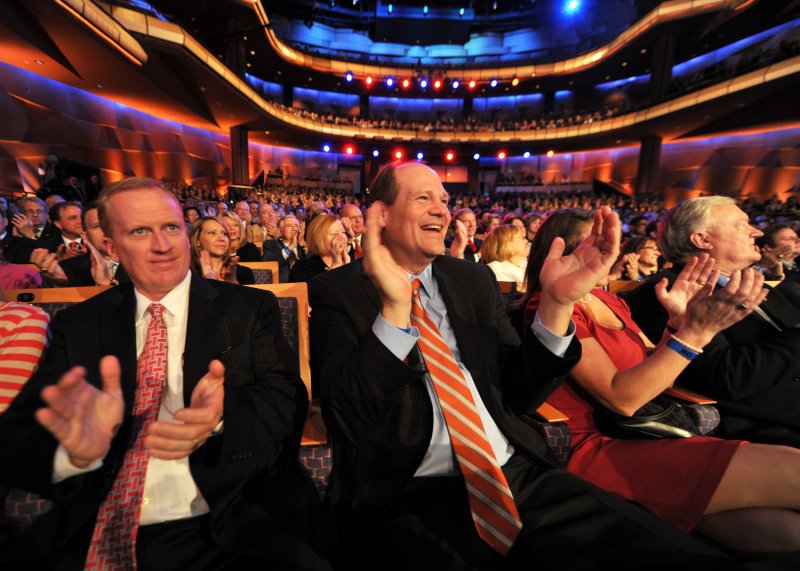Members of the audience applaud the Republican presidential candidates before the debate at the Mesa Arts Center in Mesa, Arizona, February 22, 2012. (File/UPI /Art Foxall) |
License Photo
When people clap at a performance, they applaud based on what they hear around them, not how much they liked what they saw, according to a new study.
When the researchers graphed the times at which people started and stopped clapping, the graph had a sigmoidal curve, like graphs of people getting infected and then recovering from a disease.
The report, published in the Journal of the Royal Society Interface, is part of broader research into virality on the Internet. Clapping, it turns out, is just as infectious as Grumpy Cat or Gangnam Style.
Swedish Uppsala University mathematicians, led by Dr. Richard Mann, filmed the response of six different groups of university students to two different PowerPoint presentations.
After graphing the applause times, researchers tested several equations that could explain how people decide to start and stop clapping. Possible modes of applause included everyone clapping for a certain length of time, clapping based on spatial proximity to clappers, and clapping based on overall proportion of clappers.
They found an individual's probability of starting clapping increased in proportion to the number of other audience members already clapping. Spatial proximity was found to be irrelevant, as the sound carried across the audience.
The decision to stop clapping was also socially mediated, and additionally influenced by some individuals reluctant to clap for too long. Interestingly, by the time some people started clapping, others had already begun to stop.
Random variation in each audience meant how long applause lasted varied widely, even between audiences that rated a presentation as equally enjoyable.
The researchers thus concluded that applause can be modelled as a "social contagion."
Though nobody cares about applause in particular, the researchers say they hope to create a model others can use to study other social phenomena, such as how long people decide to stay in a social network, or how to make a YouTube video go viral.















